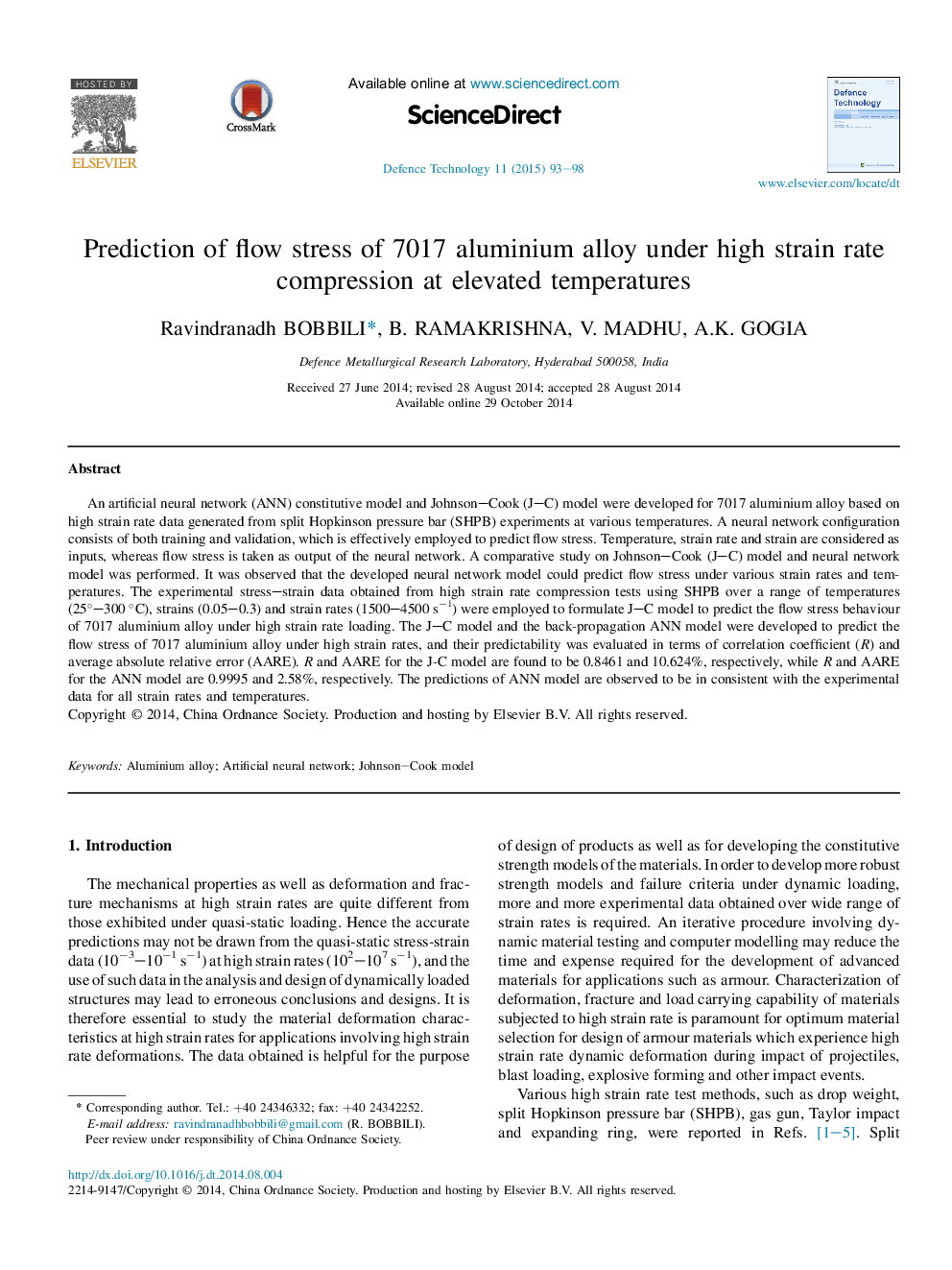| Article ID | Journal | Published Year | Pages | File Type |
|---|---|---|---|---|
| 759786 | Defence Technology | 2015 | 6 Pages |
An artificial neural network (ANN) constitutive model and Johnson–Cook (J–C) model were developed for 7017 aluminium alloy based on high strain rate data generated from split Hopkinson pressure bar (SHPB) experiments at various temperatures. A neural network configuration consists of both training and validation, which is effectively employed to predict flow stress. Temperature, strain rate and strain are considered as inputs, whereas flow stress is taken as output of the neural network. A comparative study on Johnson–Cook (J–C) model and neural network model was performed. It was observed that the developed neural network model could predict flow stress under various strain rates and temperatures. The experimental stress–strain data obtained from high strain rate compression tests using SHPB over a range of temperatures (25°–300 °C), strains (0.05–0.3) and strain rates (1500–4500 s−1) were employed to formulate J–C model to predict the flow stress behaviour of 7017 aluminium alloy under high strain rate loading. The J–C model and the back-propagation ANN model were developed to predict the flow stress of 7017 aluminium alloy under high strain rates, and their predictability was evaluated in terms of correlation coefficient (R) and average absolute relative error (AARE). R and AARE for the J-C model are found to be 0.8461 and 10.624%, respectively, while R and AARE for the ANN model are 0.9995 and 2.58%, respectively. The predictions of ANN model are observed to be in consistent with the experimental data for all strain rates and temperatures.
